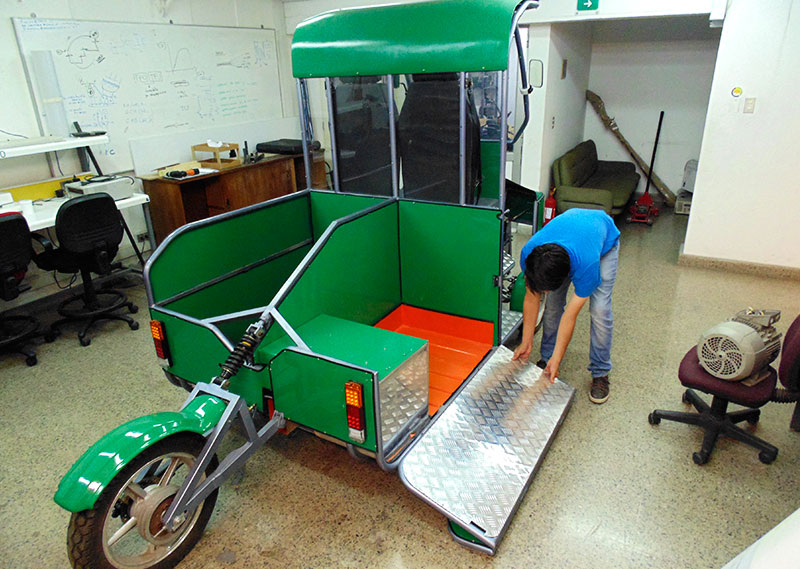
Project Description
VESUSCON or Condor Sustainable Vehicle is a project focused on the design, construction, and implementation of an electric community utility vehicle with vehicle-to-grid (V2G) capacity. The objective of this tool is to promote economic productivity and reduce diesel use and dependence in the power generation and cargo transport industries, thus becoming a social contribution in rural and isolated areas in Chile. The community chosen for the implementation of this project is Huatacondo, in the region of Tarapacá, a town relying on a microgrid power generation system.
This vehicle, which boasts a V2G capacity, allows its battery banks to exchange energy with the grid it is connected to. It has two operation modes: firstly, disconnected from the electric grid, carrying out traction works, cargo transport to farms, recollection of solid home waste, and cargo transport in the town; and secondly, it can be used while parked and connected to the grid. In this way, the community has access to services of charger balance, harmonic electricity filtering, and softening of voltage steps.
Origin and Contributions
The Condor Sustainable Vehicle project started in 2010 as a complement to the first renewable energy-based smart microgrid in the region of Tarapacá. Currently, this project is undergoing construction and implementation phase, its main focus being functionality and user safety, as well as social promotion and strengthening for the project’s appropriate administration and operation.
This project was made possible thanks to the funds granted by CE-FCM of the Physics and Math Faculty at Universidad de Chile and Renewable Electricity Generation in South America, REGSA. It is also supported by SABIC Polymershapes and Compañía Minera Doña Inés de Collahuasi.
